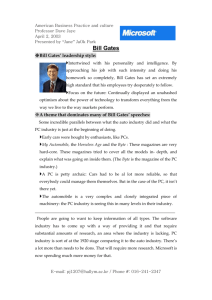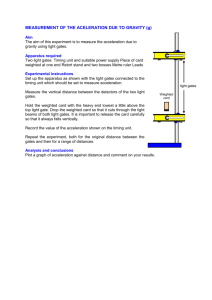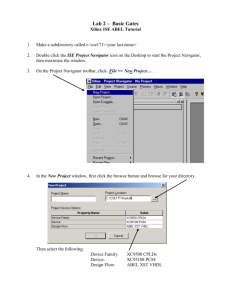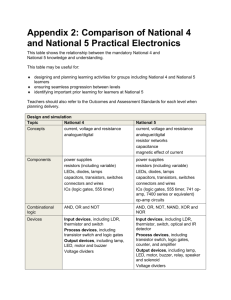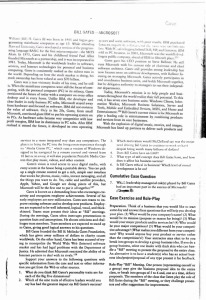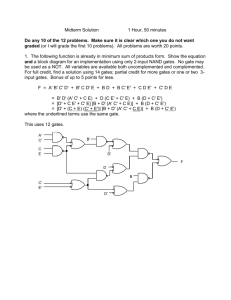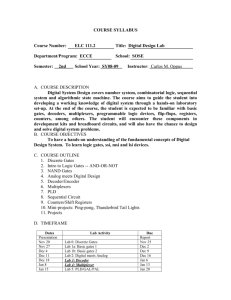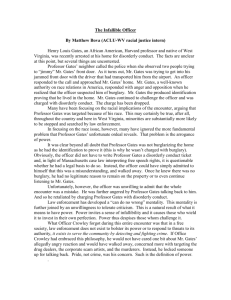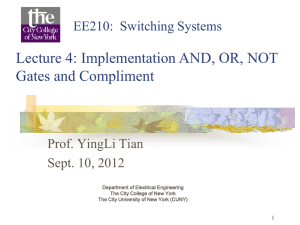Hodgkin-Huxley gating variables
advertisement
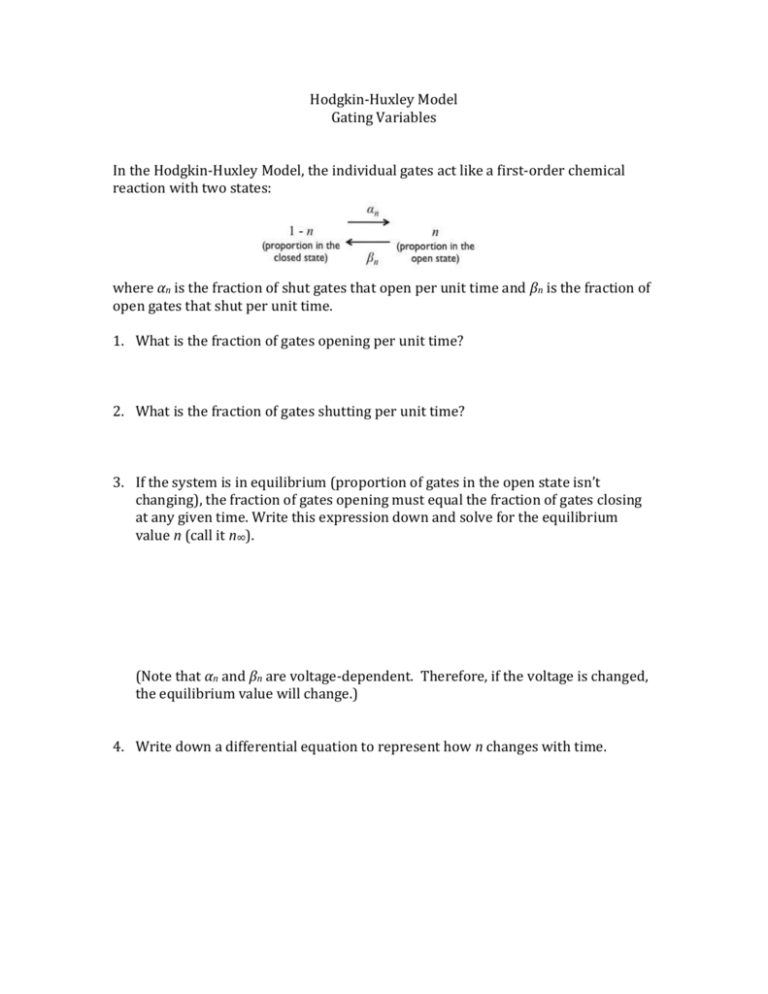
Hodgkin-Huxley Model Gating Variables In the Hodgkin-Huxley Model, the individual gates act like a first-order chemical reaction with two states: where αn is the fraction of shut gates that open per unit time and βn is the fraction of open gates that shut per unit time. 1. What is the fraction of gates opening per unit time? 2. What is the fraction of gates shutting per unit time? 3. If the system is in equilibrium (proportion of gates in the open state isn’t changing), the fraction of gates opening must equal the fraction of gates closing at any given time. Write this expression down and solve for the equilibrium value n (call it n∞). (Note that αn and βn are voltage-dependent. Therefore, if the voltage is changed, the equilibrium value will change.) 4. Write down a differential equation to represent how n changes with time. 5. Draw the corresponding phase line (recall that αn and βn must be positive) and sketch solution curves. 6. Suppose we have an initial condition, n(0) = n0. The differential equation that you obtained above can be solved by separation of variables. The solution is given by n n(t) n n 0 e( n n )t n n n n Now replace αn/(αn + βn) with an expression you found above, and replace (αn + βn) in the exponent with 1/τn. Write the new equation. 7. Assume we start at some fixed voltage for a long period of time, and therefore n is at a starting equilibrium n0. The voltage is then changed suddenly and αn and βn immediately switch to new values. n starts to change and approaches its new equilibrium value, n∞. τn is called the “time constant.” Try to deduce the meaning of the time constant (e.g., what does it mean if you have a short or long time constant). 8. You can think of n as the probability that a single gate is open. Hodgkin and Huxley proposed that each potassium channel has 4 identical gates. What is the probability that the whole potassium channel is open?
